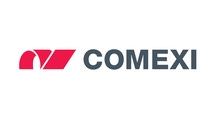Dispersions & Resins
“We are entering a new era of sustainability and there is no turning back”

Tell us about Comexi’s history in the flexible packaging market.
Comexi was founded in 1954 by Manel Xifra Boada and his wife, and since then has always been a family-owned company, with the second and third generation now both involved in the business.
Our five product lines specialize in different conversion processes, covering all production stages from a virgin reel to a final product reel.
Our global reach includes two production centers (Girona and Brazil), commercial offices in the USA (Miami) and Russia (Moscow), a Technological Center, and a worldwide network of agents, technicians and spare parts covering more than 100 countries.
What was your initial involvement with water-based inks?
Solvent vs water is an age-old question. Traditionally water-based inks were not used for film printing because of drying difficulties and the perceived quality of the result. But in the last 10 years, developments made in digital plates and inks have meant the quality you can obtain has risen to the same level as for solvent-based inks. So why not use water-based inks for film printing and produce less VOCs, more sustainable products, and protect the health of operators?
We asked ourselves this question in 2012, and as a result we developed a machine fully adapted to water-based printing. The machine had three drying zones, including a dehumidifier, so improving the drying capacity and thus the performance.
How did the market for using water-based inks evolve since then?
When we introduced this technology, there was great interest: customers wanted to run tests, see for themselves that the printing quality was the same, that processes downstream (such as lamination) also work with water-based printed products, and that printing speed was not much affected.
But these benefits sometimes are not enough to convince printers to make the move. Moving to a water base means investing in equipment and changing some printing practices. There were some brave customers who were early adopters of the new technology, but we did not succeed in getting the market to make a massive movement.
However, since then, the market for water-based inks has continued to evolve. Increased restrictions on solvent emissions are paired with growing demand from end-users for sustainable solutions. This has strongly accelerated the development of the technology.
Today, there is almost no price, quality and performance difference between water-based and solvent-based printing technology. Therefore, the sustainable option has turned into a profitable alternative.
How does your ink choice fit in with your sustainability policy?
As a family-owned company, we take our legacy seriously, and transmitting our values to the next generation. This requires not just a business vision, but also a human perspective. We embody this perspective in our commitment to sustainability, in our mission to offer global solutions including knowledge, and in our vision to be leaders of our industry by offering our customers a range of solutions to cover their needs.
Our company is highly innovative, and we are proud of it. This innovative character is intrinsically linked to developing sustainable solutions so we leave our next generation not only with a healthy company, but also in a better world. We have a firm commitment to preserving the environment, and this is reflected in our EMAS III accreditation in environmental excellence, granted by the European Union.
Why is water-based ink an issue more stakeholders in the flexible packaging industry should be interested in?
We are currently seeing a ‘momentum’ build where printers have more and more reasons to switch. The latest developments in inks and digital plates have matched the quality of solvent-based printing in a level where it is difficult to differentiate the printing. Plus, today there is much more sensibility towards sustainability, with society pushing brand owners to make environmentally safe products, and brand owners in turn pushing converters.
Don’t miss the momentum!
Do you have any advice for companies considering switching to water-based inks?
The change to a water base requires effort as well as investment. It is not enough to have the right machine: you also need to get the best from it.
We will support you in making the transition successfully. We can offer you full water base machines, as well as hybrid machines to make the change step by step. We have recently run a campaign offering advice on how to move from solvent base to water base printing and offering customers our support to modify their machines to adapt to water-based printing.
We also have our Technological Center (CTec) where we can train our customers, where they can develop their products without losing production time, where ink manufacturers can improve their inks, and from where our experts will support our customers to make the transition to the new technology.
What do you think the future holds for flexible packaging?
In my view, we are entering a new era of sustainability and there is no turning back. Solvents will be under greater and greater scrutiny, and eventually we will all be compelled to move to solvent-free printing. Water-based printing is the easiest way to achieve this.
A few facts about our interview partner:
Name: Jordi Puig
Role: Brand Manager & Business Developer Flexo Business Unit at Comexi
Company: Comexi
Founded in: 1954
Specialisms: Suppliers of machinery and services to flexible packaging converters
Describe your company in 10 words: Providing global solutions to the demands of a market in constant development














